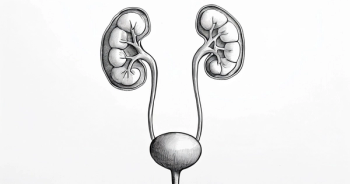
- NSCLC (Issue 6)
- Volume 6
- Issue 1
Nanovesicles as Targeted Therapy for Lung Cancer
Available therapies for patients with lung cancer are associated with a number of significant toxicities that must be effectively managed by oncologists.
Available therapies for patients with lung cancer are associated with a number of significant toxicities that must be effectively managed by oncologists. These toxicities adversely affect quality of life in such patients, providing further impetus for more effective and more tolerable treatment options for patients with lung cancer.
Nanovesicles as Targeted Therapy
Selective delivery of anticancer agents remains a key obstacle in implementing effective therapies for both primary and secondary, or metastatic, cancers. Recent data demonstrate that saposin C-dioleoylphosphatidylserine (SapC-DOPS) induces tumor apoptosis and significantly inhibits tumor growth in preclinical models and may be a promising treatment for lung cancer.SapC-DOPS is a biotherapeutic agent composed of a lysosomal protein (saposin C) and a phospholipid (dioleoylphosphatidylserine), which is incorporated into nanovesicles that selectively target and induce cancer cell death. These actions are a consequence of the affinity of SapC-DOPS for phosphatidylserine, an acidic phospholipid abundantly present in the membrane surface of a variety of tumor cells and tumor-associated vasculature.1,2
Viability assays showed that SapC-DOPS cytotoxicity was positively correlated with cell surface phosphatidylserine levels. These specific actions spare normal cells and tissues, which suggests the potential for reducing adverse effects associated with lung cancer treatment.
Investigation in Multiple Cancers
The binding of SapC-DOPS to phosphatidylserine is favored at acidic pH, which characterizes the milieu of many solid tumors.1Results of this study support SapC-DOPS binding to lung cancer cells was more pronounced at low pH.Results from several studies suggest that SapC-DOPS nanovesicles may be a promising treatment option for lung cancer. In addition to lung cancer, other studies indicate that SapC-DOPS has shown selective cytotoxic activity in pancreatic cancer3,4, skin cancer5, and primary and metastatic brain tumors6, while conferring a significant survival advantage in a preclinical model of breast cancer metastasis to the brain.2,6Data suggest that systemically delivered SapC-DOPS nanovesicles are well tolerated and do not induce hepatotoxicity or manifest adverse effects.7
The agent warrants further clinical study, according to its inventor, Xiaoyang Qi, PhD, associate professor of medicine, division of hematology-oncology, department of internal medicine, University of Cincinnati College of Medicine, Ohio.
References
- Zhao S, Chu Z, Blanco VM, Nie Y, Hou Y, Qi X. SapC-DOPS nanovesicles as targeted therapy for lung cancer.Mol Cancer Ther. 2015;14(2):491-498.
- Blanco VM, Chu Z, Vallabhapurapu SD, et al. Phosphatidylserine-selective targeting and anticancer effects of SapC-DOPS nanovesicles on brain tumors.Oncotarget. 2014;5(16):7105-7118.
- Olowokure O, Qi X. Pancreatic cancer: current standards, working towards a new therapeutic approach.Expert Rev Anticancer Ther. 2014;14(5):495-497.
- Chu Z, Abu-Baker S, Palascak MB, Ahmad SA, Franco RS, Qi X. Targeting and cytotoxicity of SapC-DOPS nanovesicles in pancreatic cancer.PLoS One. 2013;8(10):e75507.
- Abu-Baker S, Chu Z, Stevens AM, Li J, Qi X. Cytotoxicity and selectivity in skin cancer by SapC-DOPS nanovesicles.J Cancer Ther. 2012;3(4):321-326.
- Wojton J, Meisen WH, Jacob NK, et al. SapC-DOPS-induced lysosomal cell death synergizes with TMZ in glioblastoma.Oncotarget. 2014;5(20):9703-9709.
- Qi X, Chu Z, Mahller YY, Stringer KF, Witte DP, Cripe TP. Cancer-selective targeting and cytotoxicity by liposomal-coupled lysosomal saposin C protein.Clin Cancer Res. 2009;15(18):5840-5851.
Articles in this issue
almost 11 years ago
Prior Cancer Diagnosis Not Viable Exclusion From Lung Cancer Trialsalmost 11 years ago
Liquid Biopsy Use in NSCLC Clinical Practice on the Horizonalmost 11 years ago
Lung Cancer Screening: Implementing the New Protocolalmost 11 years ago
Maintenance Therapies for Patients with Non-Small Cell Lung Canceralmost 11 years ago
Challenges Oncologists Face in Treating Lung Canceralmost 11 years ago
Diagnostic Platforms for Lung Canceralmost 11 years ago
Potential Modulator of NSCLC Metastasis Identified





































